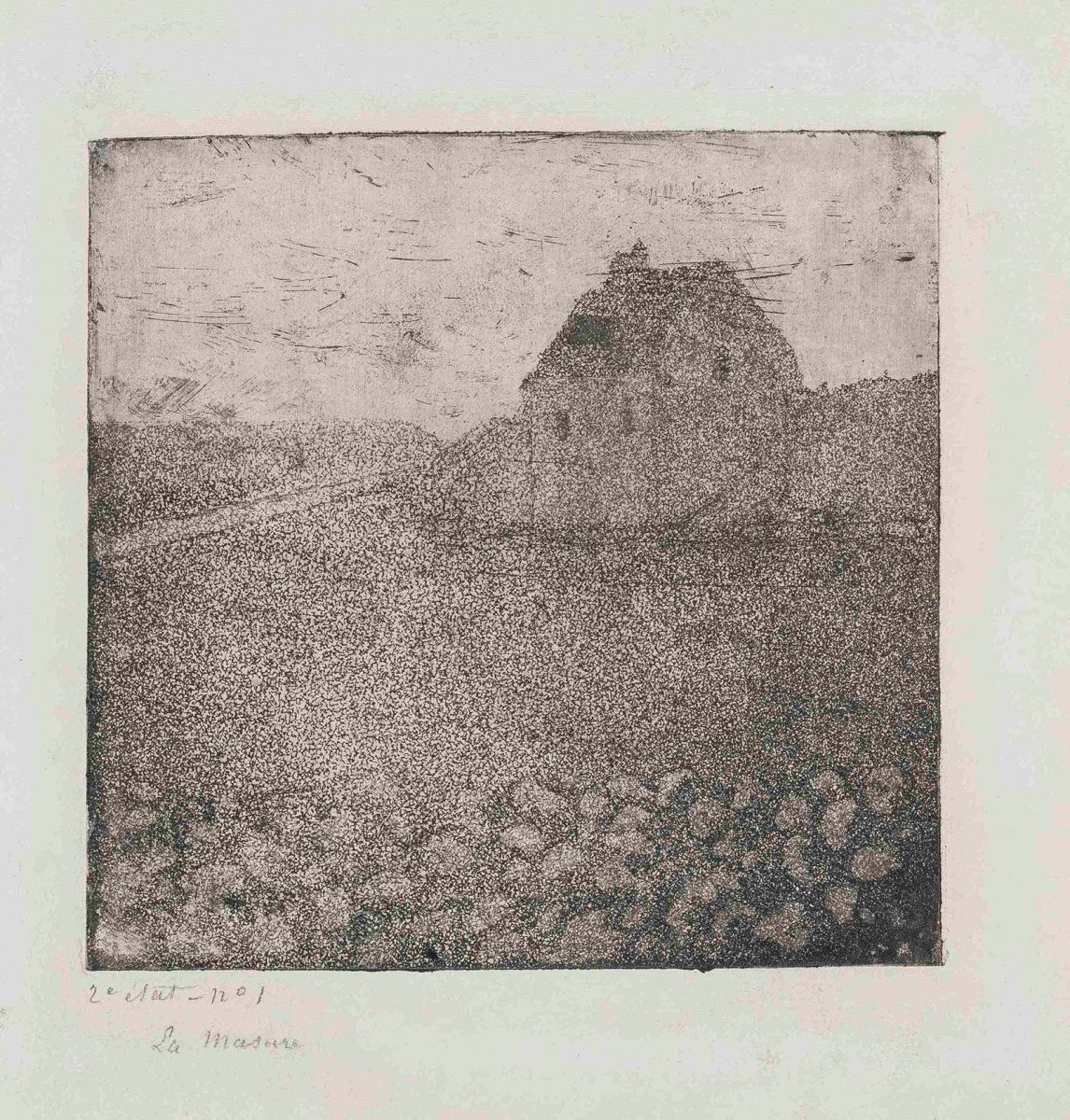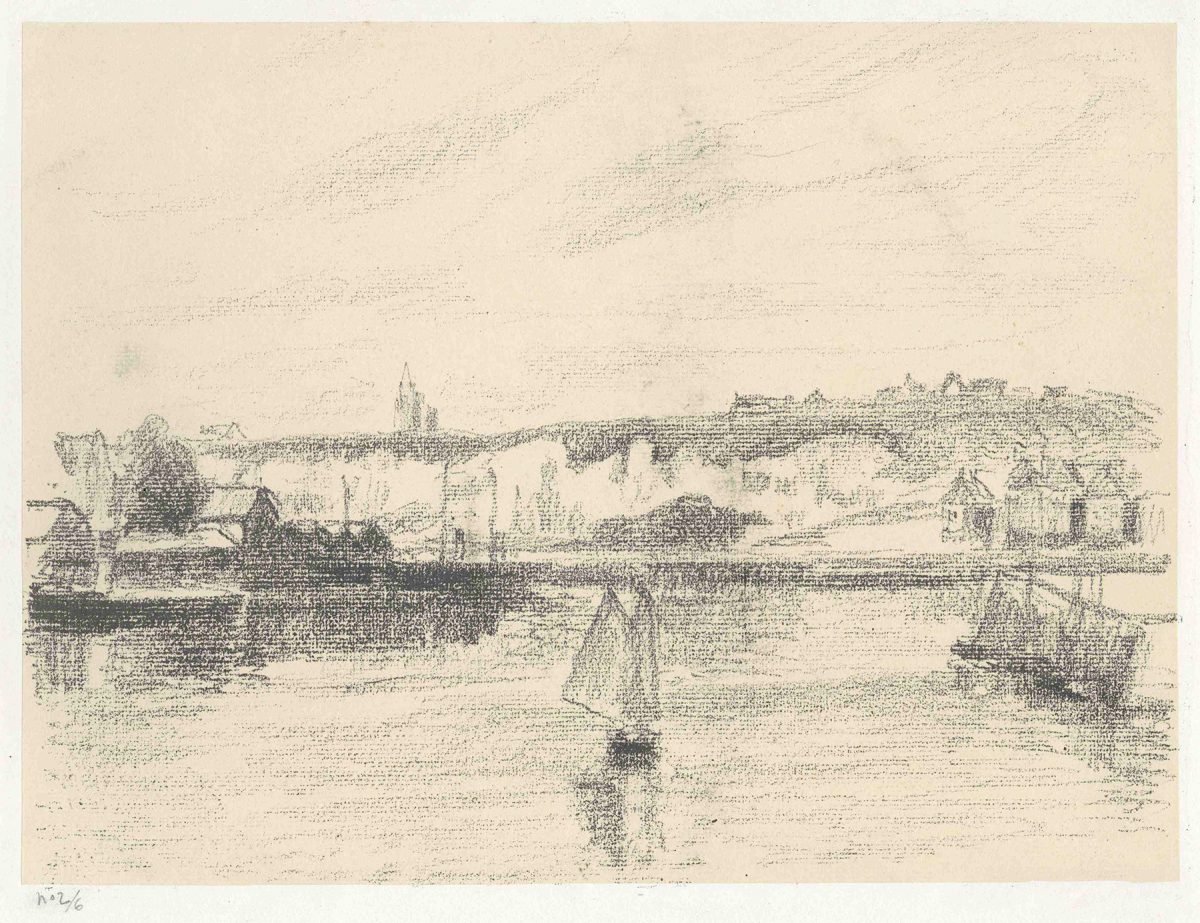The collection of the Fondation William Cuendet & Atelier de Saint-Prex currently includes three prints by Pissarro. The first is a very moving self-portrait, Camille Pissarro par lui-même (1890-1891), a print of rare quality which Gérard de Palézieux acquired at the end of his life. The second is a lithograph of the outer harbour at Dieppe, a scene that Pissarro painted sixteen times from his hotel room in 1902. Finally, there is La Masure (1879), a print that dates to the period when the artist returned to printmaking at the instigation of his friend Edgar Degas. It was on Degas's advice that Pissarro began to use aquatint and to combine different etching techniques, paving the way for several important works.
Considered one of the fathers of Impressionism, Camille Pissarro was also the movement's most prolific printmaker, having produced almost 200 prints over the course of his long career. The son of a Jewish merchant of Portuguese origin, Pissarro grew up in the West Indies and spent part of his education in Passy, France. After spending two years in Venezuela (from 1852 to 1854) studying with the Danish painter Fritz Melbye, and one year in Saint-Thomas, Pissarro left the Americas for France in 1855. Influenced by landscape painters such as Corot and Millet, he took courses at the Académie Suisse and began exhibiting at the Salon in 1859. Having made friends with several modern artists, he played an important role in the Impressionist movement, participating in its first exhibition in 1874. A lover of nature, Pissarro drew inspiration from the landscapes where he lived (Pontoise, Louveciennes, Éragny), although urban views (in Paris and Rouen) also figured importantly in his work. The younger generation – and particularly Gauguin, who was his pupil - recognised him as a leading artist of their day.
Pissarro was also one of the major figures in the rise of painter-printmakers in the second half of the nineteenth century. He began etching in the early 1860s, and he was a founding member of the Société des Aquafortistes in 1862. After a hiatus of several years, Pissarro took up etching again in 1873, in Pontoise, where he met Paul Cézanne (whose portrait he both etched and painted) and Dr Paul Gachet, who was himself an amateur etcher. Around 1878, a new and particularly intense phase began in Pissarro's engraving, spurred in particular by his exchanges with Edgar Degas. It was on Degas's advice that Pissarro began to use aquatint and to combine different etching techniques, paving the way for successes such as La Masure (1879). From 1884, having settled in Éragny, Normandy, Pissarro produced some of his masterpiece prints, such as his etched self-portrait Camille Pissarro par lui-même of 1890. In the last years of his life, he experimented with etching in coloured inks, and he also returned to lithography, producing a series of Bathers as well as country and city landscapes.


